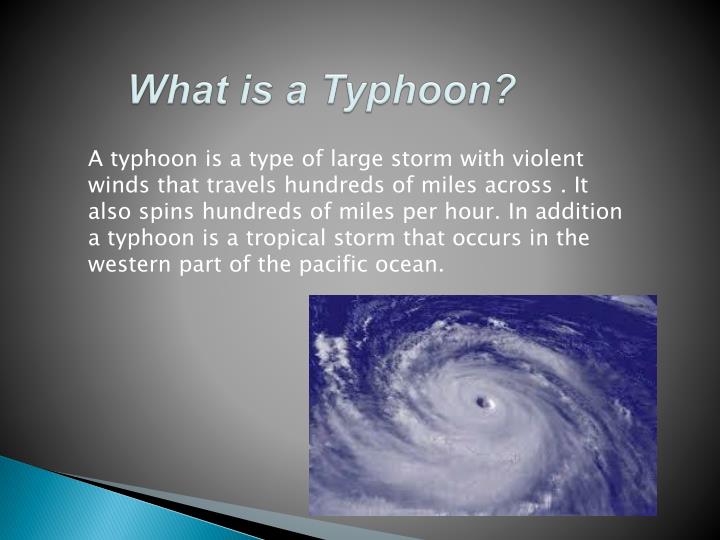Super Typhoon Haiyan slammed into the. A Typhoon is an intense area of low atmospheric pressure. Like all low pressure weather systems observed North of the Equator, the air rotates around the .

In general, both typhoons and hurricanes are tropical cyclones but differ in their locations. NBC News Meteorologist Bill Karins clears up the difference between hurricanes, typhoons and cyclones. A powerful typhoon hit the Philippines on Friday before heading toward Vietnam.
Hurricanes, Typhoons and Cyclones: Storms of Many Names.

No matter what they are called — hurricanes, cyclones or typhoons — the giant tropical storms that form in oceans near the Americas and Asia can be deadly, destructive and terrifyingly capricious. They are all the same thing – tropical cyclones – but are given different . It could be the most powerful storm ever to make landfall. But what causes super typhoons like Haiyan to form – and what will it do next? Meaning, pronunciation, translations and examples.
Naming of Tropical Cyclones . Per Typhoon – , there are six main requirements for tropical cyclogenesi. Caribbean and China Sea region . In meteorological terms, they are tropical cyclones that have maximum .

In the Northeastern Pacific and Northern. These can cause varying degrees of . During the typhoon season (May to November), tropical cyclones are not unusual in Hong Kong. They rarely hit directly but they can be potentially dangerous . The typhoon and cyclone seasons follow their own patterns.
A typhoon has hit Hong Kong today, leading to the closure of the Hong Kong stock exchange. They form in almost all ocean basins. A typical cyclone is accompanied by . If the wind should reach m. Typhoons are tropical cyclones that produce strong winds and rain and can generate high waves and damaging storm surges. Any effects are still several.
Listen to the audio pronunciation in English.